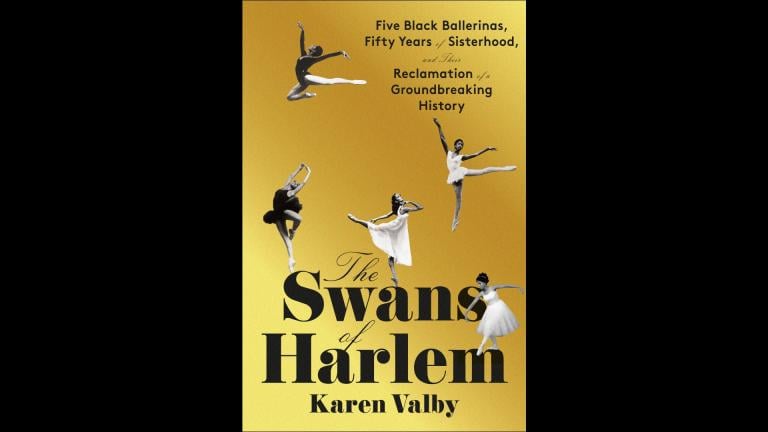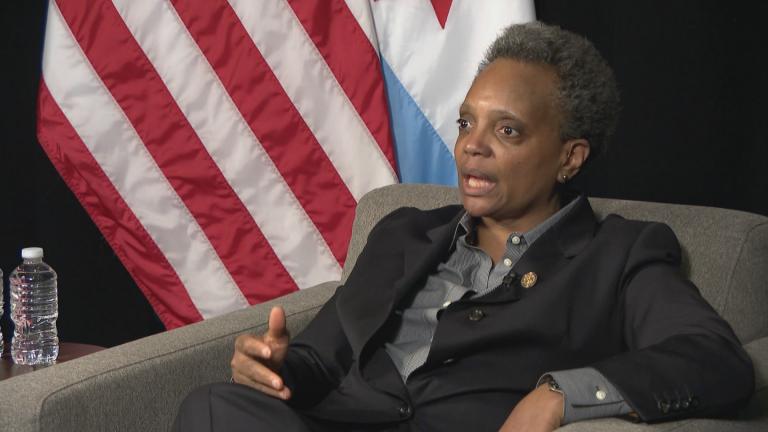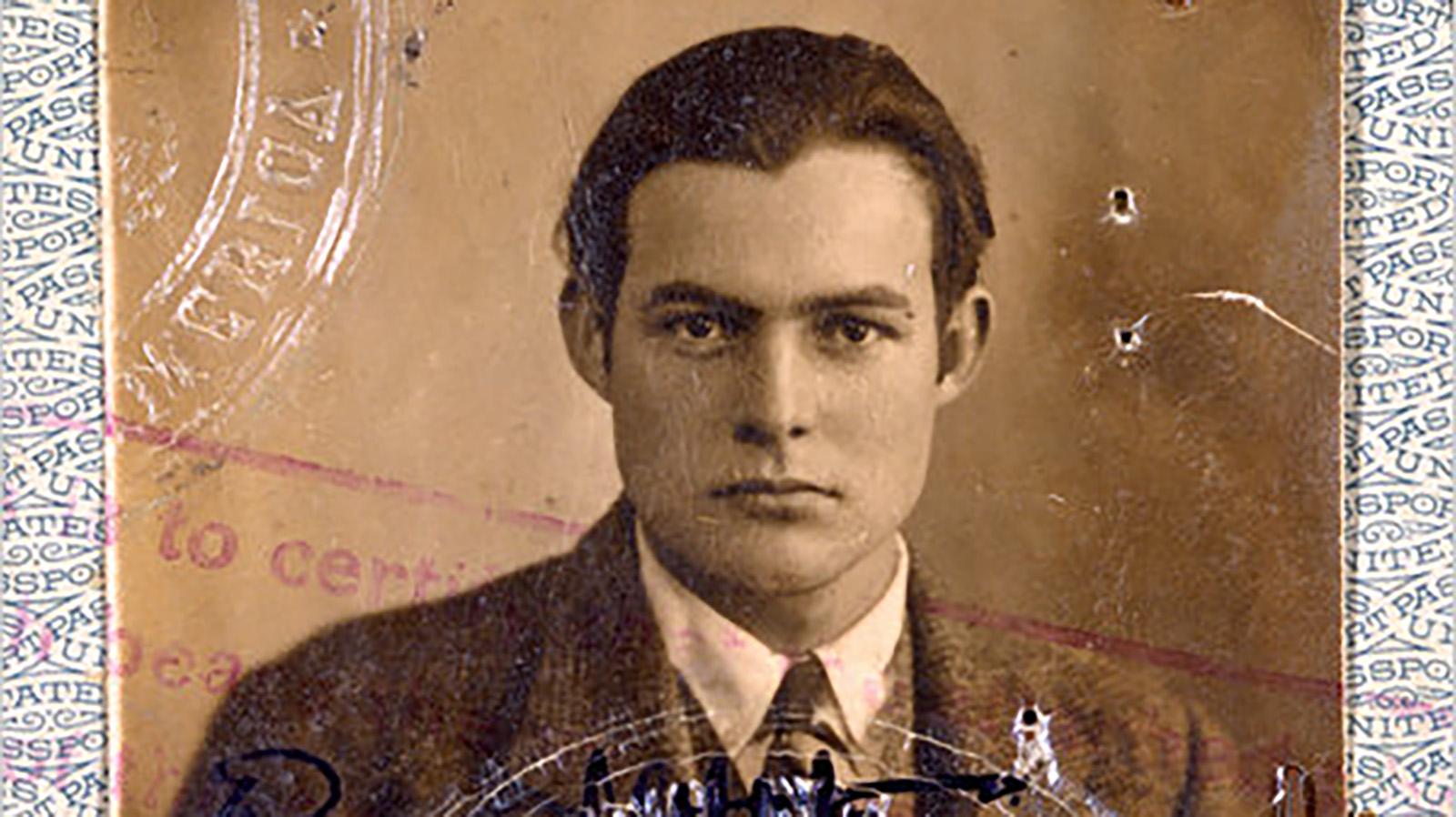 Ernest Hemingway’s 1923 passport photo.
Ernest Hemingway’s 1923 passport photo.
The legendary writer Ernest Hemingway possessed towering talents and formidable faults. The chapters of his life overflow with historical experiences that seem unbelievable but are true. Other stories sound authentic but are bogus.
“We’re just hoping to set the record straight and not only give people a source for these stories, but also shed light on things they might not know – that includes the gender fluidity, the plane crashes, even things like his last day,” said Chicago-area writer Robert K. Elder, co-author of the new book “Mythbusting Hemingway.”
Elder and co-author Thomas Bevilacqua burrowed deep into the vast historical record of the Pulitzer and Nobel Prize-winning novelist, short story writer and journalist from Oak Park. What they discovered makes for a lively, entertaining read with both scholarly viewpoints and trivial fun.
Subtitled “Debunking Hemingway Myths and Celebrating the Extraordinary Stories of his Life,” the authors examine the known facts and pass verdicts on whether oft-told Hemingway histories are true, false, possible or improbable.
Here are 10 of the many facts and fictions explored in “Mythbusting Hemingway:”
-
True – The “great white hunter” once bagged a toilet.
When the husband of Hemingway’s eventual fourth wife (Mary Welsh) dragged out their divorce, Ernest flew into a rage, tossed the man’s photo in a toilet and shot it six times with a machine pistol, destroying the porcelain bowl. The crime scene was a room at the Ritz Hotel in Paris, and the room flooded. No word if he was welcomed back, or if pieces of the privy ended up on Hemingway’s trophy wall. -
False – He said Oak Park was a place of “wide lawns and narrow minds.”
This line has even appeared in biographies, but the quote has never been sourced. “There’s no textual basis for that at all,” says Elder. Any issues Hemingway had with his hometown were likely problems with his conservative family, who bemoaned the “filth” he was writing. (He did make a rare local reference in an early short story, in which a war veteran contracts gonorrhea from an encounter in a taxi cab in Lincoln Park.)
-
True – Hemingway accidentally shot himself… while fishing.
In 1935, while using a gaffing stick to hook a shark in the Gulf Stream, the author of “The Old Man and the Sea” discharged his .22 pistol. The bullet ricocheted and went through both of his calves. Hemingway wrote about the experience in Esquire magazine saying “there was absolutely no pain at all.” Other reports say he was “humiliated by the accident.” Years later, he wrote admiringly of Santiago, the protagonist of “The Old Man and the Sea,” who “know[s] how to suffer like a man.” -
True – He survived back-to-back plane crashes.
Living a life of adventure, Hemingway was “a magnet for physical harm.” On safari in Uganda, the small airplane he was traveling in struck a telegraph wire strung across a gorge. The plane crash-landed. Hemingway was hurt, but he flagged down another plane to carry his party to safety. The second plane caught fire on takeoff and crashed, injuring Hemingway severely. He later celebrated his escape (which brought him his fourth concussion in 10 years) with a trip to the bar. -
True – He fought Orson Welles (and others).
Hemingway was a fighter as well as a writer, but his war with Orson Welles was more of a skirmish. A few punches were thrown in a movie theater while a film about the Spanish Civil War played onscreen. The lights went up, they laughed and shared a bottle of whiskey. Hemingway also sparred with former heavyweight champ Gene Tunney, and he flattened the poet Wallace Stevens, who had unwisely struck him first. Alcohol was involved in all three occasions.
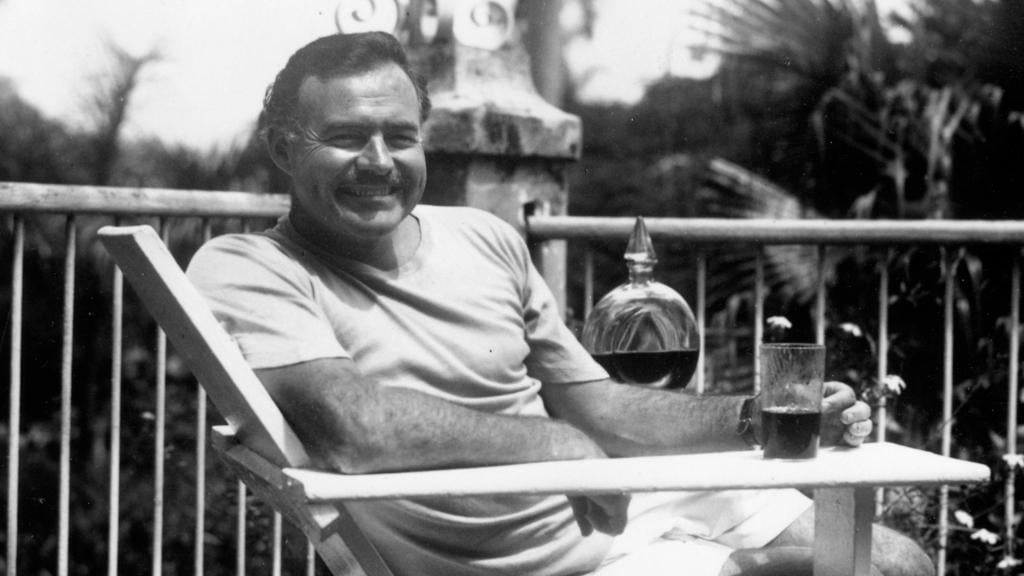 Ernest Hemingway pictured in 1935.
Ernest Hemingway pictured in 1935.
-
Partly true – Movie star Ava Gardner skinny-dipped in Hemingway’s pool, and he threatened to fire anyone who drained the water.
The actress had already appeared in three film adaptations of Hemingway’s works when she met the author and became “good chums,” as she described them. The story that Gardner swam naked in the Hemingway pool at his home in Cuba is well-sourced, but he never he warned his staff to keep the pool water – an amusing, if somewhat creepy, anecdote. -
False – The author wrote a short story using just six words.
The story in its entirety: “For Sale: Baby Shoes, Never Worn.” He was a master of economic prose, but there’s no evidence he wrote this tweet-sized tale. The episode was mentioned in a 1989 one-man play about Hemingway and later repeated in a book by a literary agent. “It’s a fabrication,” says Elder. “Some of his most famous quotes are just misattributed. There’s one about people being broken, and that’s where the light gets in. That’s Leonard Cohen, that’s not Ernest Hemingway.
-
True – Hemingway was gender fluid.
It’s well-established that this manly man was dressed as a girl by his mother when he was a tot, a common practice in the Victorian era. Much later, according to Elder, “He engaged in gender-swapping, especially with his fourth wife, Mary, and it was part of his identity. He’d grow his hair long, he often liked to be called Catherine. It was part of his private life not his public persona but it does, I think, explain his hyper-masculinity.” Released 25 years after his death, Hemingway’s novel “The Garden of Eden” tells the story of a writer and his wife, Catherine, who explore gender roles. -
False – Hemingway was a warmonger.
He lived a life of danger and violence, but he was realistic about warfare, having experienced it as an ambulance driver in World War I and as a journalist in the Spanish Civil War and World War II. His protagonist in “A Farewell to Arms” offers a chilling reflection on war: “The things that were glorious had no glory, and the sacrifices were like the stockyards in Chicago if nothing was done with the meat except to bury it.” He was also an occasional liar, claiming to have killed 122 men during World War II. A biographer later wrote that the number of Hemingway’s wartime victims “increased in direct ratio to his drinking.”
-
True –Hemingway died by suicide.
This may be common knowledge now, but Hemingway’s death in 1961 was widely reported as an accident that occurred while he cleaned a shotgun. The nature of his death would remain unclear for five years until the publication of A.E. Hochner’s biography “Papa Hemingway.” Robert K. Elder: “We did a deep, forensic exploration, a CSI of Hemingway’s death.” The suicide has been called the most famous suicide in American history, and “Mythbusting Hemingway” exhumes the gory details of how he ended his life.
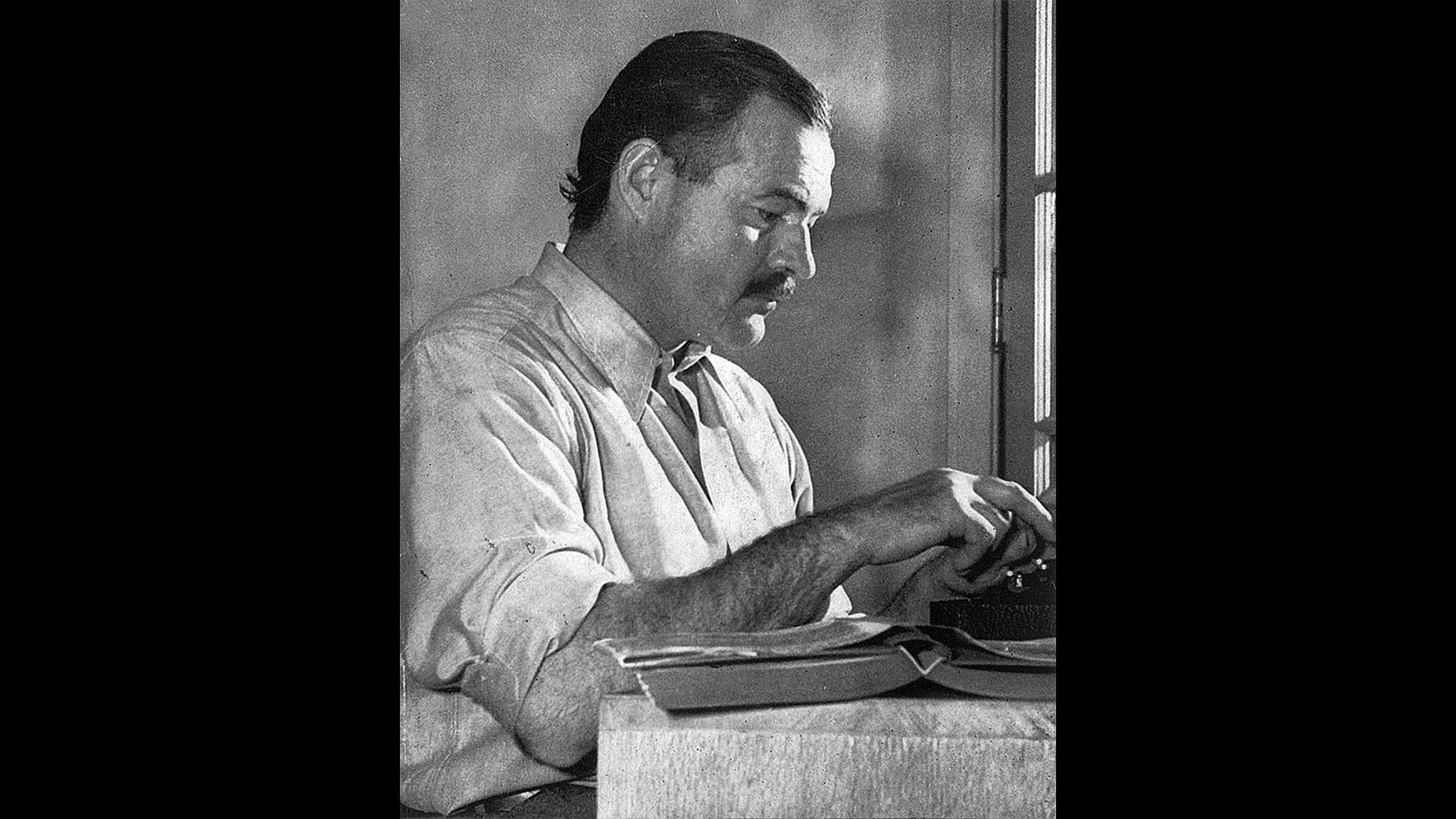
Hemingway’s illustrious life sparked legends. Some falsehoods were spread by his editor. Others, by the author’s own hyperbole.
“What happens when you become larger-than-life, when your myth becomes larger than you, when you lose control of that legend?” asks Elder.
“There was an embrace of this mythic, hyper-masculine author but at a certain point after his death, it just went out of control,” he said. “There were so many things that Hemingway was attributed to have said or done, and the sad part is that obscures the many amazing things he did do.”
Find more information about “Mythbusting Hemingway: Debunking Hemingway Myths and Celebrating the Extraordinary Stories of His Life.”

